Quick reminder on the dosing for the new WHOLE FOOD CALCIUM product from the Simon King webinar.
Maintence dose: x1 / 2 capsules daily
Active Bone Health x2 / 2 capsules daily
Immune boost up to 8 capsules daily in divided doses short term.
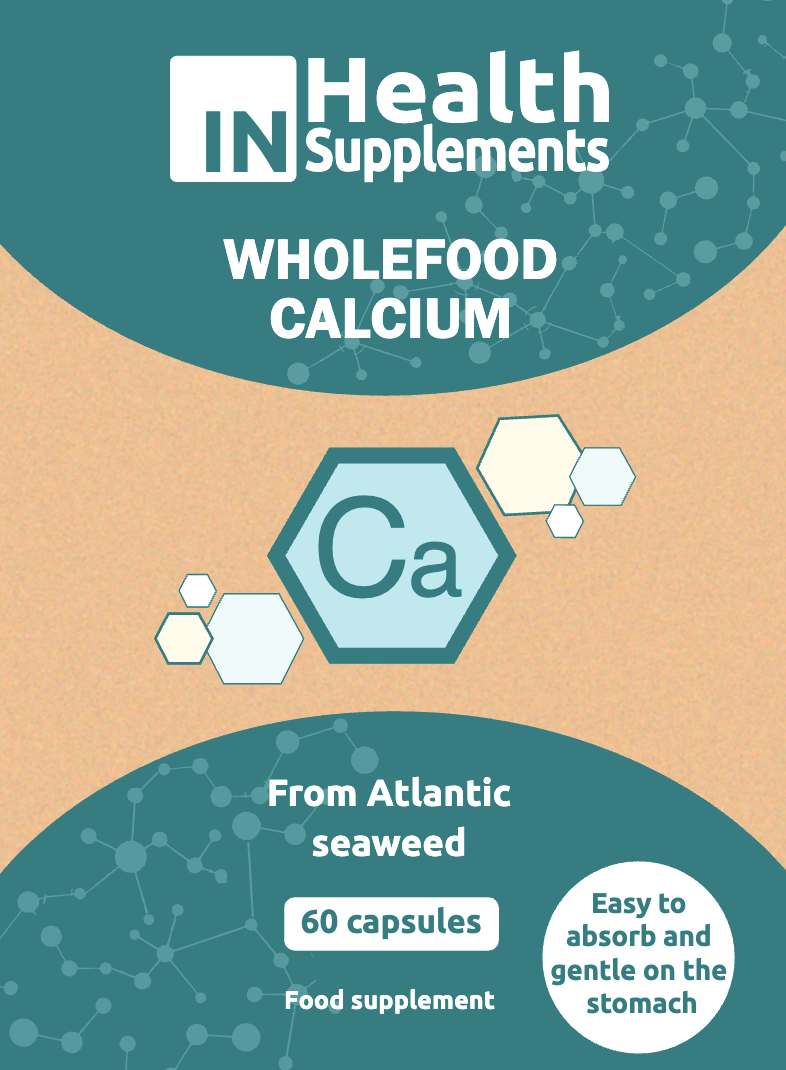
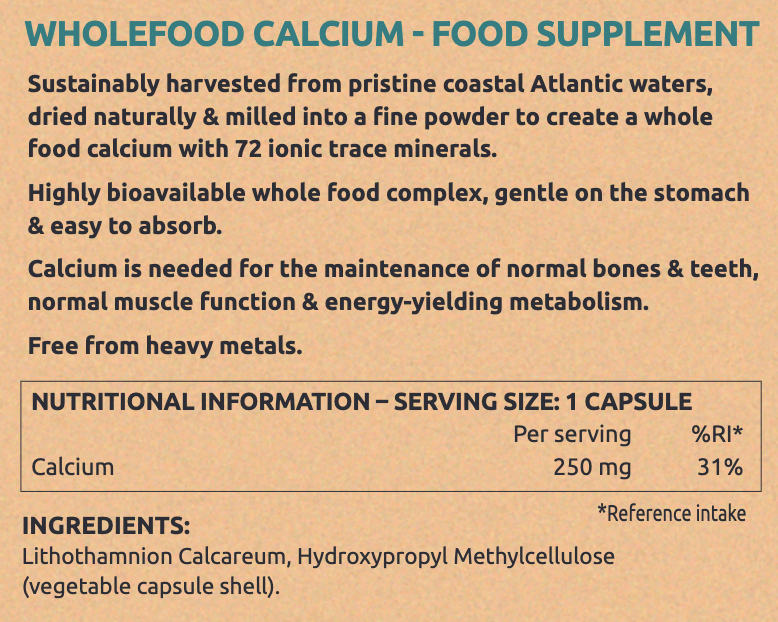
Watch Simon and I talking calcium, free 1 hour CPD.
Passcode: !6QbEyyI
Or click Simon’s face 👇

Twenty years ago when I started using probiotics, they were fringe at best and certainly not in the public consciousness.
Now they are positively mainstream and very popular.
With that comes financial opportunities for big business and with that comes people willing to take advantage of people’s lack of knowledge.
We live in a world where scientific evidence is the currency we need and demand.
So when it comes to PROBIOTICS and my gut health, I demand EVIDENCE.
And part of our launch for our SCIENCE PROVEN probiotics, today is a little primer on PROBIOTICS and an overview of some (not all) of the research to back it up.

In general, there are four types of friendly organisms we want to use clinically:
– Lactobacillus
– Bifidobacterium
– Friendly yeast (Sacharomyces Boulardii)
– Spore forming bacteria – Bacillus
Here is the truth:
The vast majority of probiotics have never, ever been tested in HUMAN CLINICAL studies.
99% are just random bacteria, in a capsule, with no evidence they do anything in humans.

If they have any research to back them up they will be patented and will have letters/numbers after them to identify the STRAIN.
As per below, there are many different lactobacillus acidophilus, but are they studied in HUMANS to be effective?

And do not fall for the marketing sleight of hand about using special capsules to ensure delivery.
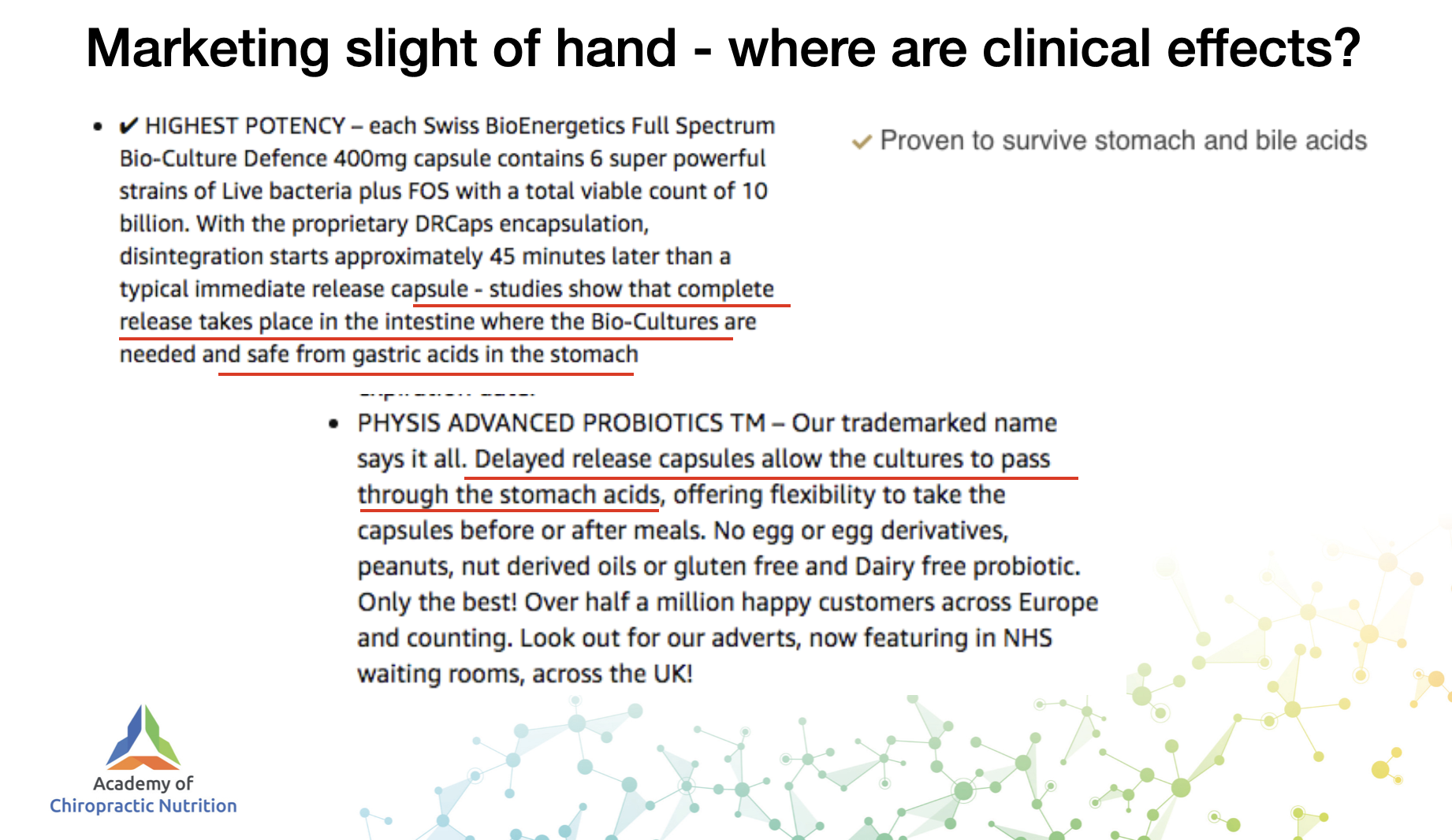
Yes, that is a thing, and yes, we use patented capsules and technology to ensure it gets past the stomach acid.
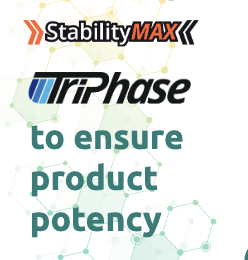
But, what is the point of that if you have never tested the bacteria in HUMAN CLINICAL studies?

The bacteria in the studies above are the ones in our capsules, known as the Lab4 strains.

Lets look at the research from Mullish et al.
The set up:
“An 8-week,single-center,randomized, double-blinded, placebo-controlled,superiority study in 70 females with Rome IV-diagnosed irritable bowel syndrome (IBS) receiving the Lab4 probiotic (25 billion colony-forming units) daily or a matched placebo.”
And results assesed by:
“Changes from baseline in the IBS-symptom severity score (IBS-SSS), daily bowel habits, anxiety, depression, IBS-related control, and avoidance behavior, executive function, and the fecal microbiota composition were assessed.”
Now the IBS-SSS is an IBS symptoms severity score, which is 5 symptoms scored out of 100 (0 being none, 100 being the worst), which are added up to the overall score out of 500.
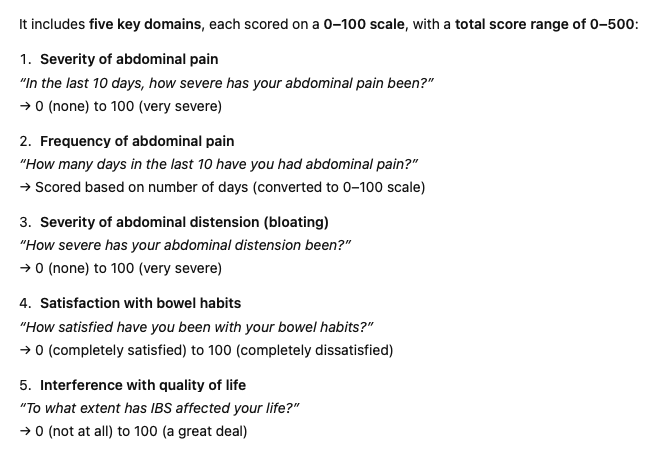
And the total number indicates the severity of IBS.

In terms of a response to treatment, anything over 50 point reduction the patient would considered as a “responder” and would be CLINICALLY MEANINGFUL.
Here we see placebo in grey, PROBIOTICS in BLUE for sub-group symptom, abdominal pain severity.
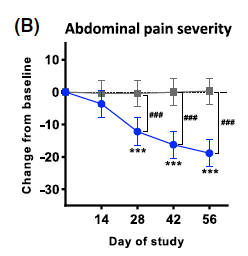
Zero change in placebo.
In probiotics by 2 months/56 days, over 20 points drop.
Thus, if you had moderate IBS with 45/100 for abdominal pain, a 20 point drop is going to be very clinically significant.
For the overall IBS-SSS combined total (out of 500), note CHANGES over time are points drop and not a % change.

We see a clear trend downwards in the probiotic group but note, not much has happened after 2 weeks in terms of change.
In 28 days, however, we are seeing something more obvious, a clear trend.
By day 56 (2 months) ON AVERAGE we see over a 75 point drop – a clinically meaningful change
This is all relative to the severity of their IBS at the start.
If considered mild (75-175 out of 500), it is an easy win for quick changes. It could mean remission (under 75 points the patient is no longer considered to have IBS).
For moderate (175-300) or severe (over 300 out of 500) IBS then it would be clinically meaningful i.e. they will verbalise they feel an obvious difference and be very pleased with the result, though not asymptomatic.
They will still have symptoms, and that is just part of clinical life (see lower down for extras to add on).
See also below the % of patients who are RESPONDERS (meaning more than 50 point drop in IBS-SSS).
Day 14 (in red) only 3% responded (the number in brackets),
to 29% at 28 days in yellow
to 55% at day 42 (in green)
to 62% at day 56 (in blue)
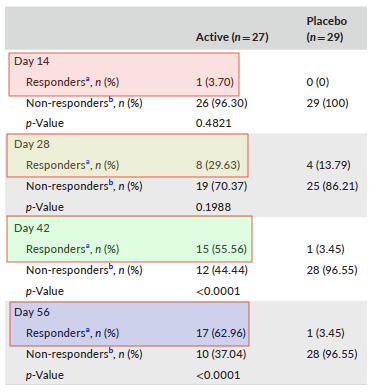
These are phenomenal numbers that means you can look your patient in the eye and tell them this is a research proven probiotic.
But it would also suggest we need to carry on for at least 2 months to see if the patient is going to respond.
NOTE, at 28 days (one bottle at x2 daily) 29% were RESPONDERS
but by day 56, 62% were RESPONDERS
So, if they took one bottle over a month, and stopped, 33% of people that WOULD have gone on to respond positively, would miss out (29% responded at 1 month, going up to 62% at 2 months)
Thus, we want to encourage and sell the Everyday BIOTIC as a 2 month trial.
Also note, some will be significantly better but not as much as they want to be (because they were more severe at the start), hence, we can add in BUTYRATE to compliment AND by next month, our other GUT HERO product, BIOME RESCUE.
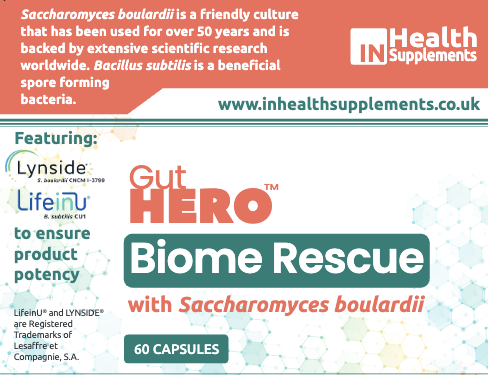
A unique blend of patented Saccharomyces boulardii AND a A PATENTED spore forming BACILLUS, called BSCU1.

The studies on immunity for BSCU1 are going to blow your mind 🤯.
Imagine if you used the GUT HERO TRIO (Everyday BIOTIC, Biome RESCUE & BUTYRATE) all together plus some simple diet changes…..you guys and girls are going to be changing lives for fun with no effort.
Note the dose used in the clinical studies of the LAB4 strains we chose is 25 billion, which is x2 capsules daily, for active therapy, which means one bottle is 1 month.
For general health and maintenance, people may choose to take x1 daily, a 60 day supply.
Equally, some might want to double up and for x4 daily to give 50 billion to make a bigger impact.
These are suitable for use alongside antibiotics (take 2 hours away from antibiotics, the further away the better), indeed have been tested for that purpose.

And

And even to reduce C. Difficile, a lethal bacterial infection common after antibiotic therapy.
Rates in placebo control were 7.25% (5-10 % in hospitals is normal) vs 2.9 % in the probiotic group.

Note: if the patient is over 65 years old and in hospital, the death rate from C. difficile is 10-20% 🤯
They are freeze dried, and so do not need to be kept in the fridge.
TRADE cases of 6, works out at £19.50, with a suggested RRP (and it is that, suggested) of £24.
